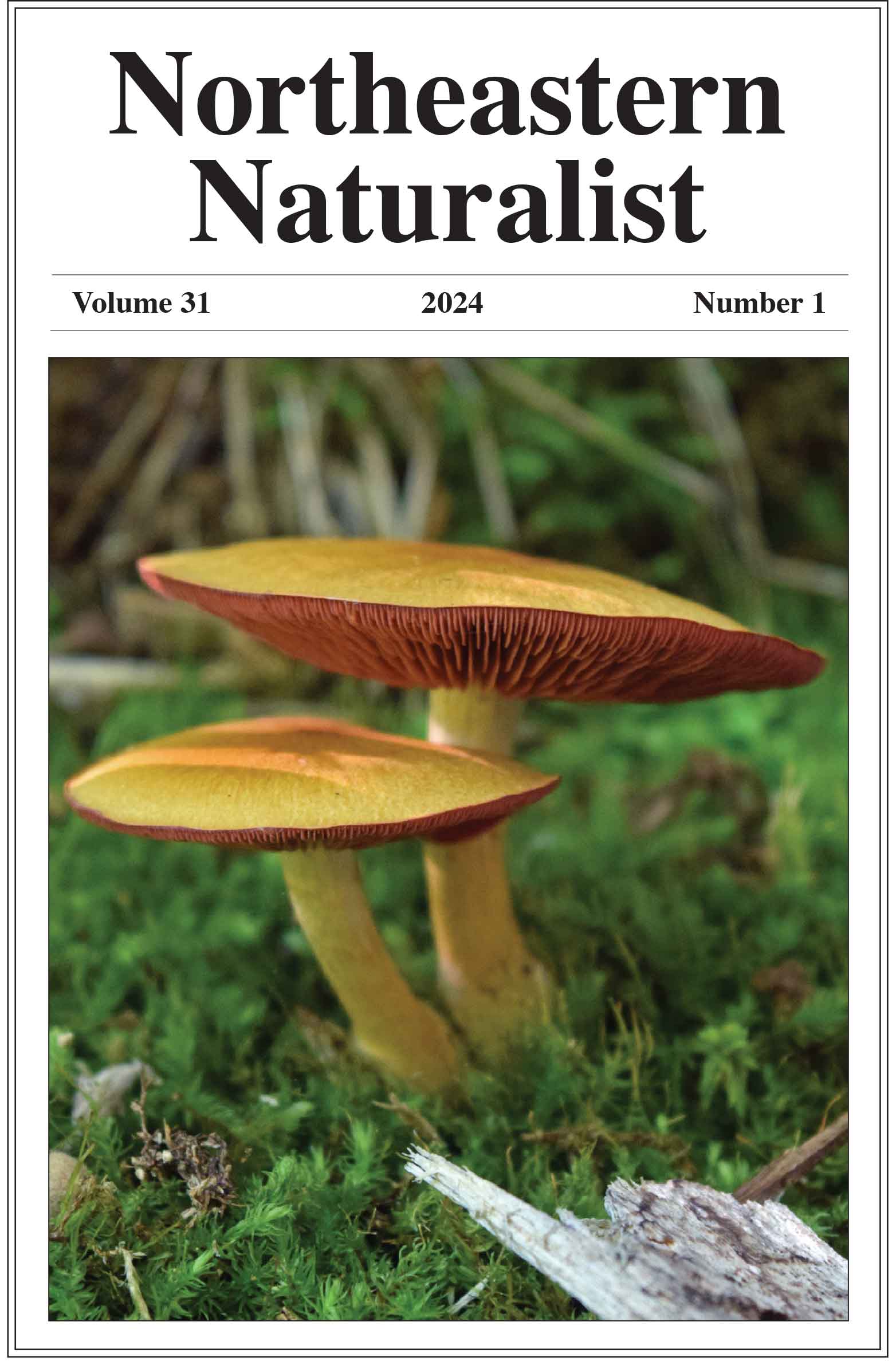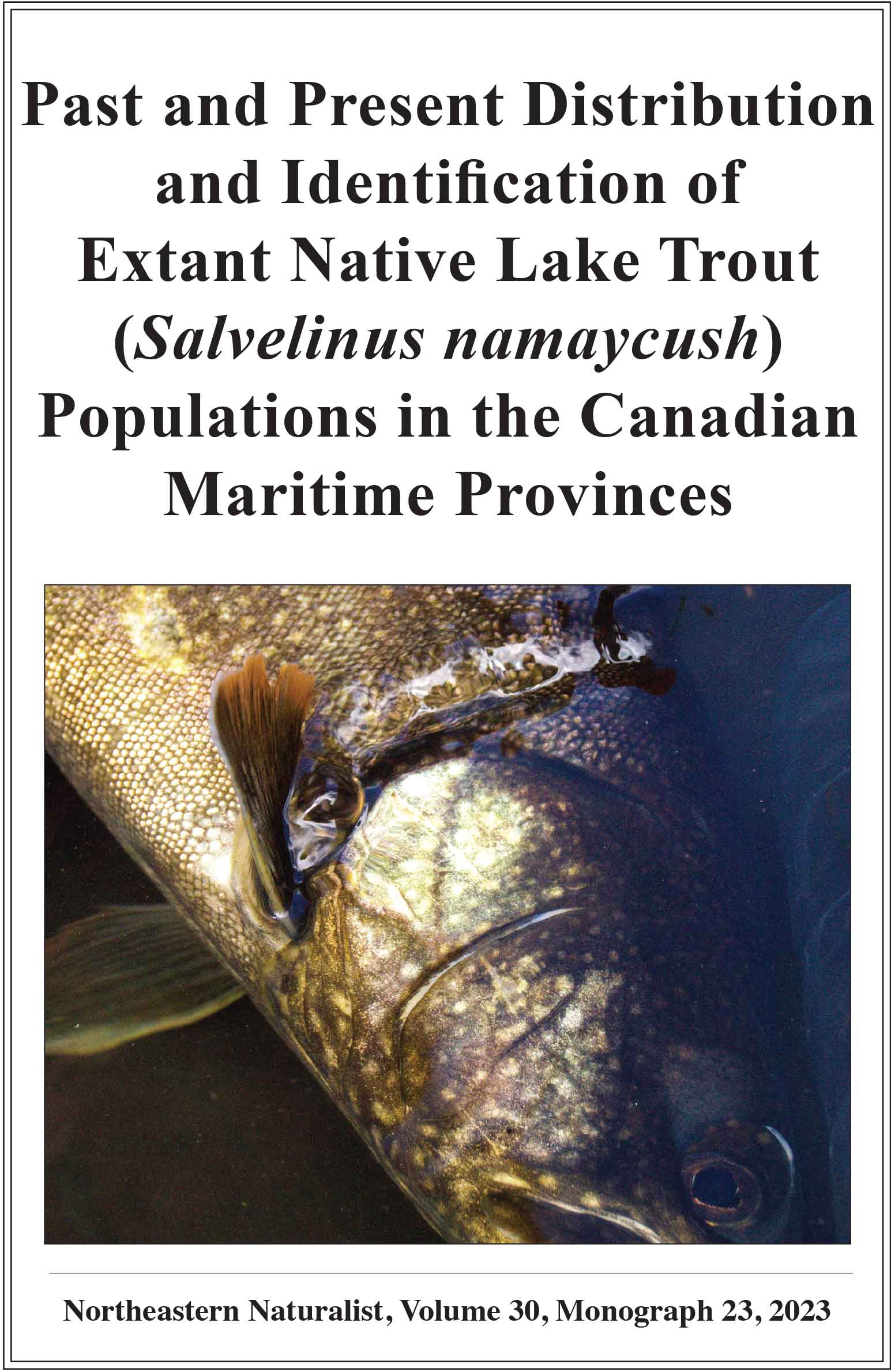Dietary Variability of the Rainbow Darter (Etheostoma caeruleum) in Northwestern Pennsylvania
Sara J. Mueller1,*, Casey Bradshaw-Wilson2, and Jay R. Stauffer Jr.1
1Department of Ecosystem Science and Management, The Pennsylvania State University, University Park, PA 16802. 2Department of Environmental Science and Sustainability, Allegheny College, Meadville, PA, 16335. *Corresponding author.
Northeastern Naturalist, Volume 27, Issue 2 (2020): 263–271
Abstract
Etheostoma caeruleum (Rainbow Darter) is a member of a diverse benthic insectivorous feeding guild. In streams with high diversity of fishes, niche partitioning by food items is one method for determining overall resource partitioning. The objective of this study was to gain insights into the foraging habits of Rainbow Darters, specifically in communities where there are varying degrees of overlap with other benthic species. This includes the exotic Neogobius melanostomus (Round Goby) and other native darter species. We collected Rainbow Darters and aquatic benthic macroinvertebrate samples at 3 streams located in northwestern Pennsylvania in the late summer of 2013, when prey abundance was seasonally lowest. We dissected fish, removed their stomachs, and identified the gut contents to lowest practicable taxon, which we tallied. Macroinvertebrate samples were sorted, identified to lowest practicable taxon, and enumerated. We used these data to calculate Strauss’ linear index of food selection for prey items occurring in greater than 1% of stomachs. Chironomids were consistently an important item in Rainbow Darter diets in Elk Creek, but they consumed a higher proportion of Hydropsychidae when the Round Goby was present. Species of Baetidae were the most important food item when other darter species occurred, with chironomids consumed at the same proportion as found in the stream. These results serve as further evidence of food resource partitioning as a potential mechanism for coexistence with other native species or with the introduction of an exotic species.
![]() Download Full-text pdf (Accessible only to subscribers. To subscribe click here.)
Download Full-text pdf (Accessible only to subscribers. To subscribe click here.)
Access Journal Content
Open access browsing of table of contents and abstract pages. Full text pdfs available for download for subscribers.
Issue-in-Progress: Vol. 31 (2) ... early view
Check out NENA's latest Monograph:












 The Northeastern Naturalist is a peer-reviewed journal that covers all aspects of natural history within northeastern North America. We welcome research articles, summary review papers, and observational notes.
The Northeastern Naturalist is a peer-reviewed journal that covers all aspects of natural history within northeastern North America. We welcome research articles, summary review papers, and observational notes.